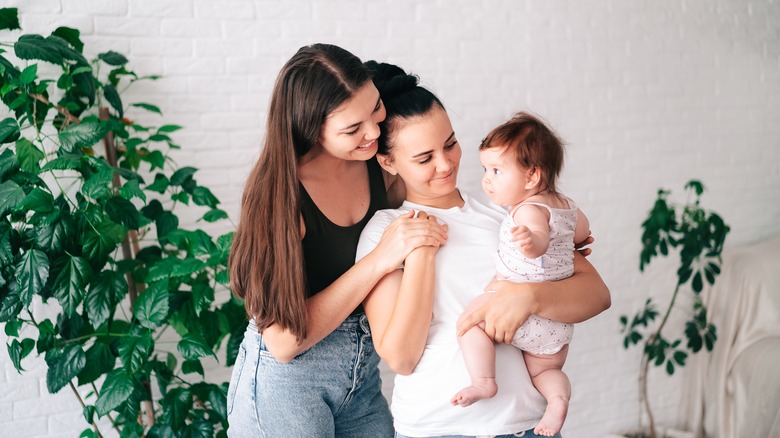It’s natural to want to create healthy attachments in our relationships. Some may even say we’re wired for it, as it helps us navigate scary territories and gives us the ability to help others in need (per Psychology Today). During the 1950s, psychologist Mary Ainsworth and psychiatrist John Bowlby developed attachment theory, which aims to explain various styles of attachment in relationships (via Mindbodygreen). These styles are first formed with our primary caregivers during infancy and influence our emotional responses, behaviors, and interactions later in life.
When it comes to attachment styles there are four in total: secure, avoidant, anxious, and a combination of avoidant and anxious. Making up 60% of the population according to The Healthy, secure attachments involve healthy, warm, comfortable, and easily formed intimate relationships. People with this attachment style don’t sweat the small stuff, and they are responsive to their partner’s needs, while also taking care of their own.
On the other hand, people with anxious attachment styles prioritize their partner’s needs at the expense of their own, and may need constant validation to feel safe (per Psych Central). Alternatively, people with avoidant styles favor independence in a relationship and may form an emotional or physical distance, as they don’t want their partner too close due to low trust. Anxious and avoidant attachment styles can both lead to codependency.
Are you able to change your attachment styles?

Although attachment styles are generally picked up during childhood, it’s possible to shift towards secure attachment styles with the proper tools, patience, and hard work, shares therapist Alyssa Mancao with Mindbodygreen.
The first step is creating awareness of your relationship patterns. Ask yourself questions that investigate how you were treated as a child, as well as questions that “assess your current and past attachment style and identify if there are any patterns in choosing romantic partners,” suggests mental health counselor Grace Suh to MindBodyGreen. “Be aware of your childhood history; the familiarity is comforting, whether it was good or bad. Meaning, your past unhealthy relationship patterns from childhood can recreate in adulthood.”
You’ll also want to surround yourself with people who have a secure attachment style (via Psychology Today). Believe it or not, surrounding yourself with people who are secure will naturally help you become more secure and stable, and will teach new secure behaviors that you can implement (per Psych Central).
Lastly, expect a lot of deep reflection as you heal and improve parts of your attachment style. Start by improving your self-esteem and honoring your true feelings and needs. Suh shares with Mindbodygreen that it’s important to practice self-love (or at least self-neutrality), to be assertive, and to set clear boundaries with those you love. For more guidance, seek help from a mental health professional to support you on this self-growth journey.



